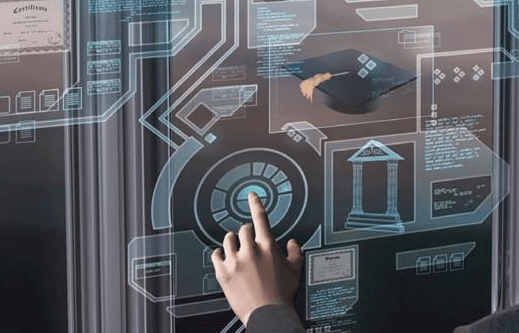What role does technology play in education reform in the USA?

Introduction
In the digital age, the role of technology in education reform has become a focal point of discussion in the USA. As educational institutions strive to meet the needs of a rapidly evolving society, technology offers innovative solutions to age-old problems, enhancing learning experiences and making education more accessible. This article delves into how technology is reshaping education in the USA, highlighting key areas such as personalized learning, teacher-student interaction, accessibility, and curriculum development.
Technology and Personalized Learning
One of the most significant impacts of technology in education reform is the ability to tailor learning experiences to individual students. Personalized learning leverages data analytics and adaptive software to meet each student’s unique needs. Tools like intelligent tutoring systems and learning management systems (LMS) adjust the difficulty of tasks based on student performance, ensuring that learners remain challenged but not overwhelmed.
For example, platforms like Khan Academy and DreamBox Learning provide personalized lesson plans and exercises, helping students master subjects at their own pace. This approach not only boosts student engagement but also improves academic outcomes by addressing learning gaps promptly.
Enhancing Teacher-Student Interaction
Technology also facilitates more dynamic and interactive teacher-student relationships. Digital communication tools such as emails, instant messaging, and virtual classrooms enable teachers to provide timely feedback and support, regardless of geographical barriers. Platforms like Google Classroom and Microsoft Teams have become integral in managing assignments, discussions, and grading, fostering a more collaborative learning environment.
Moreover, technology enables teachers to adopt innovative teaching methods. Flipped classrooms, where students review content at home and engage in interactive activities in class, are made possible through video lectures and online resources. This model not only maximizes classroom time for hands-on learning but also encourages students to take ownership of their education.
Bridging Accessibility Gaps
In the pursuit of education reform, technology plays a crucial role in bridging accessibility gaps. Students with disabilities benefit immensely from assistive technologies like screen readers, speech-to-text software, and interactive whiteboards. These tools ensure that all students, regardless of their physical or cognitive abilities, can participate fully in the learning process.
Furthermore, technology expands educational opportunities to underserved communities. Online courses and virtual classrooms provide access to quality education in remote or economically disadvantaged areas, leveling the playing field and promoting educational equity. Initiatives like the ConnectED program aim to bring high-speed internet to schools across the USA, ensuring that every student has the resources they need to succeed.
Curriculum Development and Digital Resources
The integration of technology into education has revolutionized curriculum development. Digital resources, such as e-books, educational apps, and multimedia content, provide diverse and engaging learning materials that cater to different learning styles. These resources are often more cost-effective and environmentally friendly compared to traditional textbooks.
Educational technology also supports curriculum innovation. STEM (Science, Technology, Engineering, and Mathematics) education, for instance, benefits from simulation software, coding programs, and robotics kits that provide hands-on learning experiences. These tools help students develop critical thinking and problem-solving skills, preparing them for future careers in a technology-driven world.
Data-Driven Decision Making
Data analytics is another area where technology significantly impacts education reform. Schools and educators can collect and analyze data on student performance, attendance, and behavior to make informed decisions. This data-driven approach helps identify trends, assess the effectiveness of educational strategies, and allocate resources more efficiently.
For example, predictive analytics can identify students at risk of falling behind, allowing for early intervention and support. Schools can also use data to track the success of different teaching methods and curricula, continuously improving their educational practices based on empirical evidence.
Gamification and Student Engagement
Gamification, the use of game elements in non-game contexts, is a powerful tool for enhancing student engagement. Educational games and gamified learning platforms make learning fun and interactive, motivating students to participate actively. By incorporating elements such as points, badges, and leaderboards, educators can create a competitive yet collaborative learning environment.
Platforms like Classcraft and Duolingo utilize gamification to teach subjects ranging from math to languages. These tools not only increase student motivation but also improve retention and understanding of complex concepts through interactive and experiential learning.
Professional Development for Educators
Technology also supports the professional development of educators. Online courses, webinars, and virtual conferences provide teachers with opportunities to learn new skills and stay updated with the latest educational trends. Platforms like Coursera and EdX offer a wide range of professional development courses that teachers can access anytime, anywhere.
Furthermore, technology facilitates peer collaboration and knowledge sharing. Online communities and social media platforms allow educators to connect, share best practices, and seek advice, fostering a culture of continuous learning and improvement.
Addressing the Digital Divide
While technology offers numerous benefits, it also highlights the digital divide – the gap between those who have access to technology and those who do not. Education reform efforts must address this issue to ensure that all students can benefit from technological advancements. Providing affordable devices, expanding internet access, and offering digital literacy programs are essential steps in bridging this divide.
Programs like One Laptop per Child and various state initiatives aim to provide students with the necessary tools to participate in digital learning. Ensuring equitable access to technology is crucial for achieving inclusive and comprehensive education reform.
The Role of Artificial Intelligence in Education
Artificial intelligence (AI) is poised to play a transformative role in education reform. AI-powered tools can automate administrative tasks, provide personalized tutoring, and offer real-time feedback. Intelligent tutoring systems like Carnegie Learning and AI-driven platforms like Squirrel AI use machine learning algorithms to adapt to each student’s learning style and pace, providing customized support.
AI also enhances assessment methods. Automated grading systems and natural language processing tools can evaluate written responses, reducing the burden on teachers and providing more objective assessments. These technologies enable more frequent and formative assessments, supporting continuous improvement in student learning.
Virtual and Augmented Reality in Education
Virtual reality (VR) and augmented reality (AR) technologies offer immersive learning experiences that can enhance understanding and retention. VR can transport students to historical events, scientific environments, or distant cultures, providing experiential learning that traditional methods cannot match. AR overlays digital information onto the real world, enhancing interactive learning opportunities.
For instance, platforms like Google Expeditions and Nearpod VR allow students to explore virtual field trips and simulations, bringing abstract concepts to life. These technologies foster engagement and curiosity, making learning more exciting and impactful.
Cybersecurity in Educational Technology
As schools adopt more digital tools, cybersecurity becomes a critical concern. Protecting student data and ensuring the security of educational platforms are paramount. Schools must implement robust cybersecurity measures, including encryption, firewalls, and regular security audits, to safeguard sensitive information.
Educating students and staff about cybersecurity best practices is also essential. Promoting digital citizenship and teaching safe online behaviors help create a secure digital learning environment. Collaboration with cybersecurity experts and ongoing monitoring can further enhance the protection of educational technology infrastructure.
The Future of Technology in Education Reform
The future of education reform in the USA is intrinsically linked to technological advancements. Emerging technologies such as blockchain, 5G, and the Internet of Things (IoT) hold the potential to further revolutionize education. Blockchain can enhance credential verification and academic record-keeping, ensuring transparency and security. 5G enables faster and more reliable internet connectivity, supporting the growing demand for online learning. IoT can create smart classrooms, where interconnected devices enhance the learning experience through automation and data collection.
As technology continues to evolve, its role in education reform will expand, offering new possibilities for enhancing learning and teaching. The challenge lies in ensuring that these advancements are implemented equitably and effectively, benefiting all students and educators.
FAQs
How does technology improve personalized learning?
Technology improves personalized learning by using data analytics and adaptive software to tailor educational content to individual students’ needs, ensuring that each learner progresses at their own pace and receives support where needed.
What are the benefits of gamification in education?
Gamification increases student engagement and motivation by incorporating game elements such as points, badges, and leaderboards into the learning process, making education more interactive and enjoyable.
How can technology bridge accessibility gaps in education?
Technology bridges accessibility gaps by providing assistive tools for students with disabilities and expanding educational opportunities to remote or underserved areas through online courses and virtual classrooms.
What role does AI play in education reform?
AI plays a transformative role in education reform by automating administrative tasks, offering personalized tutoring, providing real-time feedback, and enhancing assessment methods through intelligent algorithms and natural language processing.
How do VR and AR enhance learning experiences?
VR and AR enhance learning experiences by providing immersive and interactive environments that make abstract concepts tangible, such as virtual field trips, historical simulations, and augmented real-world information.
What measures are necessary to ensure cybersecurity in educational technology?
Ensuring cybersecurity in educational technology requires implementing robust security measures like encryption and firewalls, educating students and staff about safe online practices, and conducting regular security audits to protect sensitive data.
Conclusion
Technology is a driving force in education reform in the USA, offering innovative solutions to improve learning outcomes, accessibility, and engagement. By embracing personalized learning, enhancing teacher-student interaction, bridging accessibility gaps, and integrating advanced tools like AI and VR, educational institutions can create more effective and inclusive learning environments. However, addressing challenges such as the digital divide and cybersecurity is crucial for realizing the full potential of technology in education. As we look to the future, the continued evolution of educational technology promises to transform education, preparing students for success in a rapidly changing world.





